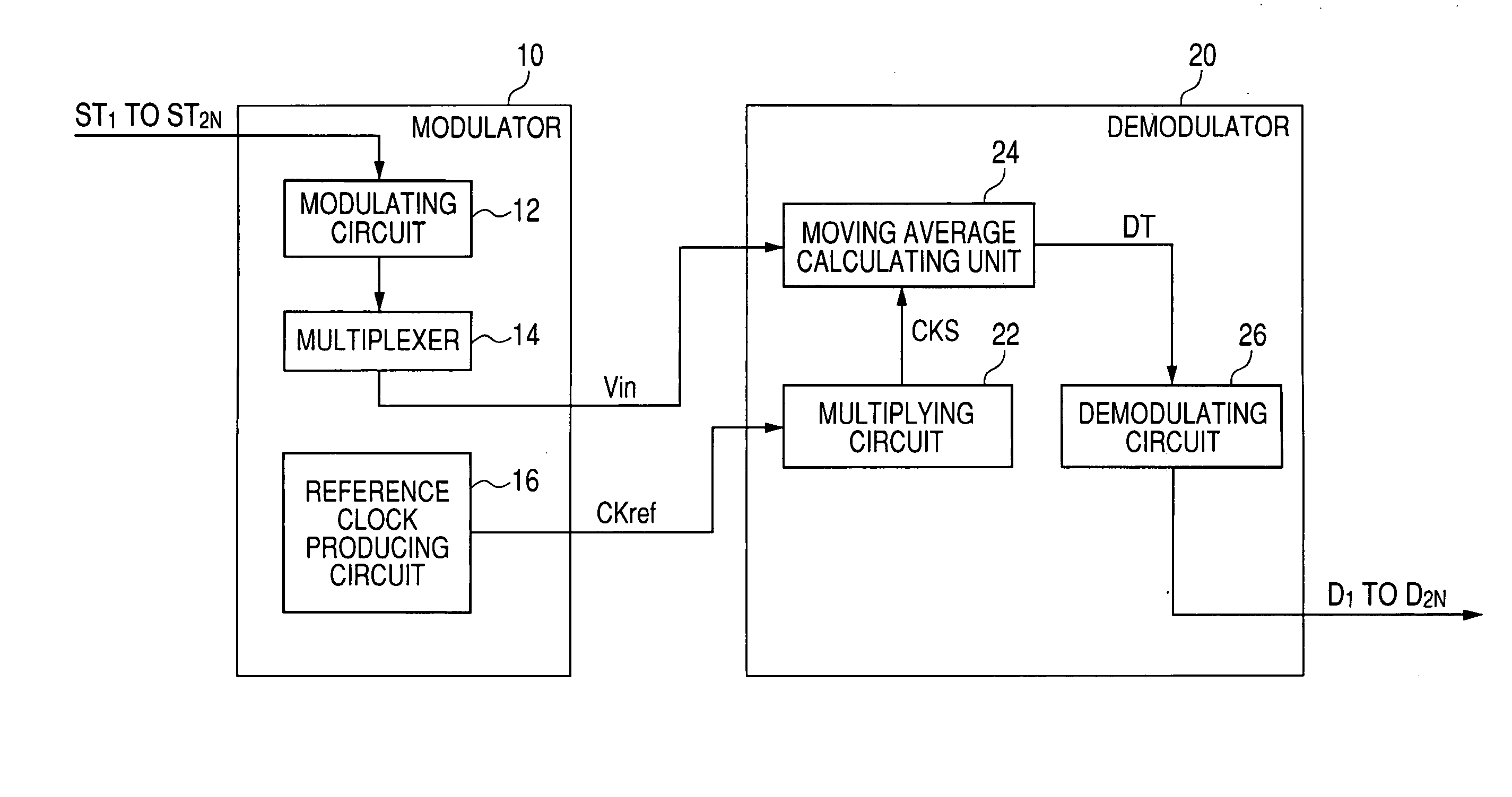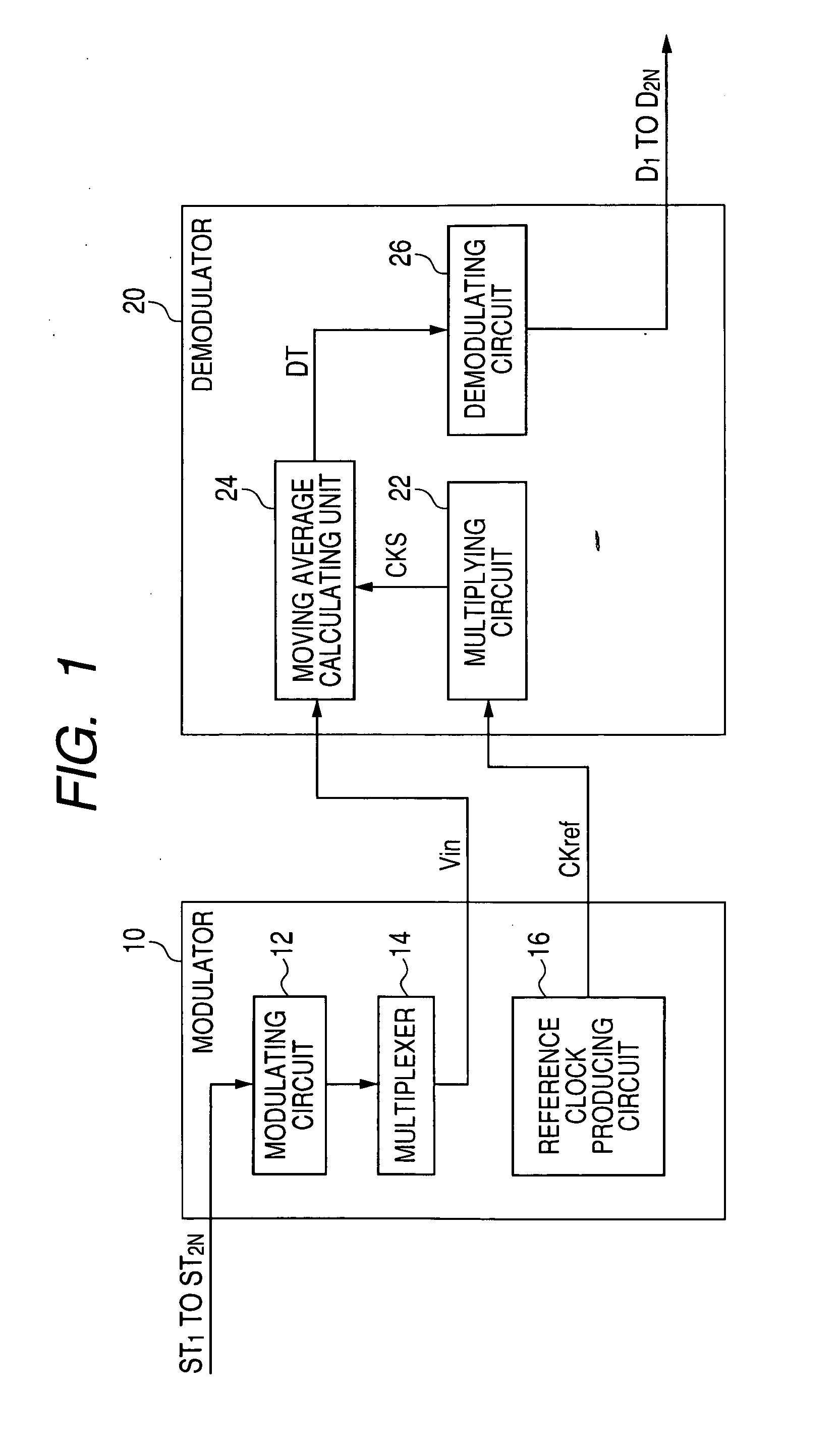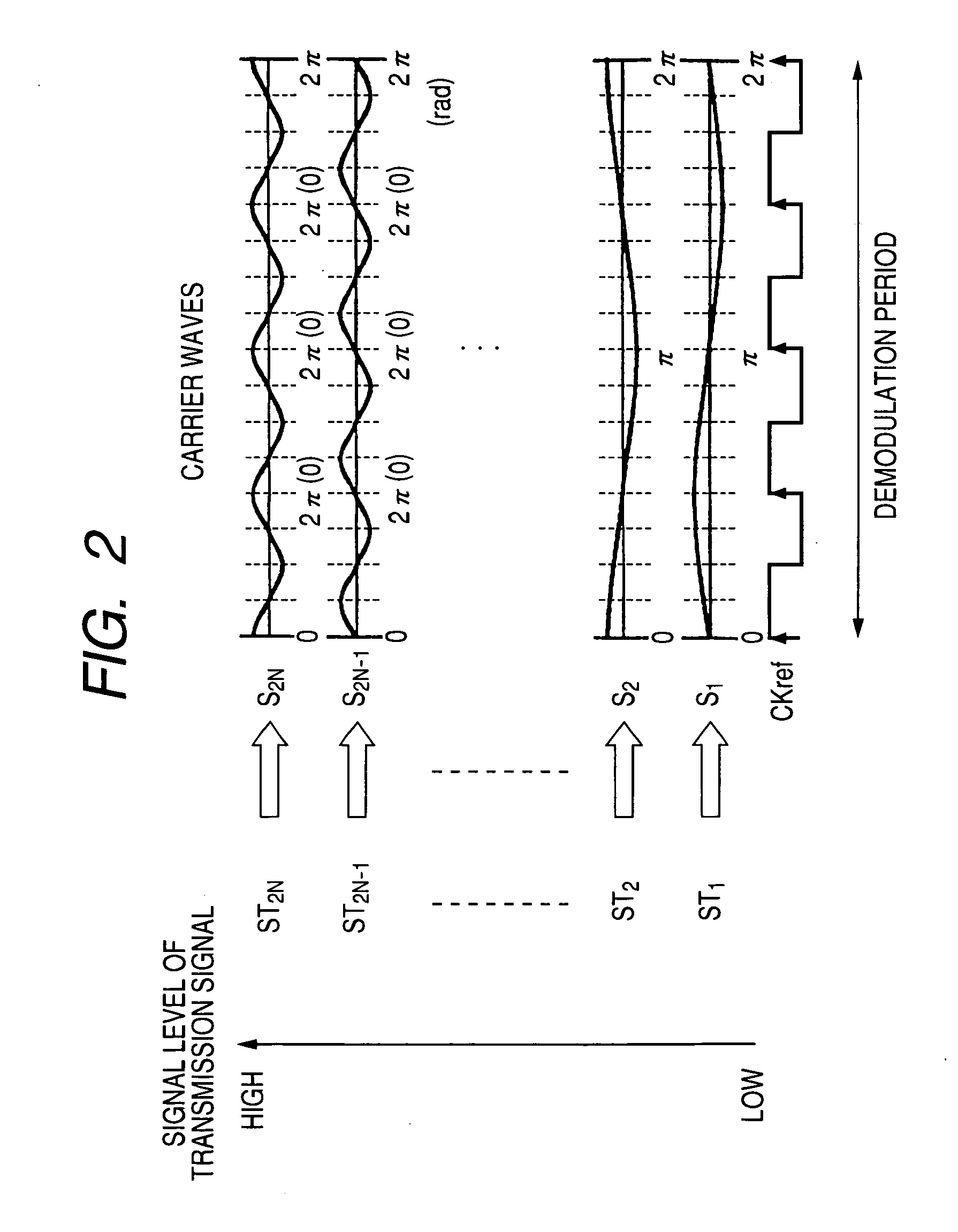Method of transmitting modulated signals multiplexed by frequency division multiplexing and physical quantity detector using this method
- Summary
- Abstract
- Description
- Claims
- Application Information
AI Technical Summary
Benefits of technology
Problems solved by technology
Method used
Image
Examples
first embodiment
Modification of First Embodiment
[0103]In the first embodiment, the modulator 10 generates the first set of carrier waves S2i−1 and the second set of carrier waves S2i having the same frequency fi=Fc / 2N−i but having phases different from each other by π / 2 radians to modulate the carrier waves S2i−1 and S2i with respective transmission signals ST2i−1 and ST2i and to transmit the modulated signals SM2i−1 and SM2i to the demodulator 20. However, the modulator 10 may generate only the first set of carrier waves S2i−1 to modulate the carrier waves S2i−1 with respective transmission signals ST2i−1 and to transmit the modulated signals SM2i−1 to the demodulator 20.
[0104]FIG. 7 is an explanatory view showing carrier waves to be modulated with transmission signals according to modification of the first embodiment.
[0105]As shown in FIG. 7, the modulator 10 generates six carrier waves S2i−1 (i=1,2, - - - ,N; N=6) having different frequencies fi=2i−6×fmax, modulates the carrier waves S2i−1 with ...
second embodiment
[0112]In the first embodiment, the reference clock signal CKref, of which the phase is synchronized with the phase of one carrier wave having the highest frequency, is transmitted to the demodulator 20 to produce the sampling signal CKS from the signal CKref and to calculate one moving average every sampling period indicated by the sampling signal CKS. In this case, the sampling signal CKS is substantially placed at its leading edge at each timing the carrier wave crosses its fluctuation center. Therefore, in the addition and subtraction calculation corresponding to each carrier wave, the difference between the sum of the moving averages in the first phase period of the carrier wave and the sum of the moving averages in the second phase period of the carrier wave is calculated as a synchronous detection result.
[0113]However, in the second embodiment, no reference clock signal CKref is transmitted to the demodulator 20. Therefore, the phase of the sampling signal CKS produced in the ...
third embodiment
Modification of Third Embodiment
[0179]In the detector 100 according to the third embodiment, the number of groups of electrode pairs 71 to 78 for holding the object 40 along the z-axis is larger than the number of frequencies of the carrier waves S1 and S4 applied to the groups of electrode pairs 71 to 78. Therefore, the frequency of the carrier wave S3 and S4 corresponding to the electrode pairs 75 to 78 is differentiated from the frequency of the carrier wave S1 and S2 corresponding to the electrode pairs 71 to 74. In this case, the precision in the synchronous detection of the carrier wave S3 and S4 becomes different from the precision in the synchronous detection of the carrier wave S1 and S2. As a result, there is a possibility that the precision in the detection of the z-axial acceleration, the precision in the detection of the angular velocity around the x-axis and / or the precision in the detection of the angular velocity around the y-axis could be lowered.
[0180]In this modif...
PUM
 Login to View More
Login to View More Abstract
Description
Claims
Application Information
 Login to View More
Login to View More - R&D
- Intellectual Property
- Life Sciences
- Materials
- Tech Scout
- Unparalleled Data Quality
- Higher Quality Content
- 60% Fewer Hallucinations
Browse by: Latest US Patents, China's latest patents, Technical Efficacy Thesaurus, Application Domain, Technology Topic, Popular Technical Reports.
© 2025 PatSnap. All rights reserved.Legal|Privacy policy|Modern Slavery Act Transparency Statement|Sitemap|About US| Contact US: help@patsnap.com



